Marine Life of Phuket – Octopus
Octopuses are the master of disguise on a reef. Many times someone may be pointing at apparently nothing and then as with a 3D photo and octopus appears!!!! This remarkable creature is compelling watching as it changes colour and texture. Camouflage is possible due to specialized skin cells that can change colour, opacity and reflectiveness of the epidermis. It is believed that the colour changing is a means of communicating with others and also to warn of danger. The muscles in the skin enables the octopus to alter the texture of it’s mantle so as to blend in with it’s surroundings, for example, the bumpy texture of a rock. There is also evidence to suggest that octopus living on a complex habitat such as a reef and are more active during the day have a more developed skin than the sand dwelling and nocturnal partners.
There are 300 recognised species of octopus worldwide. All are known to be venonmous, but only the blue ringed octopus is deadly to humans. Octopuses have 4 pairs of arms and 2 eyes and are bilaterally symmetric. There is no internal or external skeleton, which enables the creature to squeeze through small spaces if fleeing from predators. They are regarded as the most flexible and intelligent of all invertebrates having both having long and short term memory. There is only one hard part of the body, this being the beak, or mouth that is found at the centre point of the arms.
Octopuses have very good eye sight and some species are able to distinguish colour. They are also able to distinguish the orientation of their body to the horizontal using two organs that are attached to the brain called statocysts. There is also an automatic reponse that keeps the eyes orientated, so that the pupil slit is always horizontal.
The sense of touch is excellent and the suction cups found on the arms have numerous chemoreceptors that enable the octopus to taste what it touches. The arms also show a variety of complex reflex actions. This is due to 2/3 of the neurons of the complex nervous system being located there. The arms also have tension receptors, so the octopus can determine if the arms are stretched out, but the receptors are not sufficient for the brain to determine the actual position of them.
This creature also has three hearts, two are branchial hearts that pump blood to each of the two gills and the third pumps blood through the body. The blood contains a copper rich protein called hemocyanin, which is effective for transporting oxygen in cold conditions and environments where there is low oxygen pressure. The protein is dissolved in the plasma and gives the blood a bluish colour.
The life expectancy of the octopus is short from 6 months to 5 years. The death of the octopus is genetically programmed and results after reproduction. The male of the species may live for a few months after mating, but the female will die shortly after the eggs are hatched. During reproduction the male will insert a specialised arm called a hectcotylus into the female’s mantle where it deposits spematophore (packets of sperm). Some species can keep the sperm alive inside the female for a few weeks until the eggs are mature. Once fertilization occurs the female will lay her eggs, which she hangs in strings from her lair or individually on the substrate. This varies depending on the species. A female may lay upto 200,000 eggs. The incubation period is approximately a month. During this time she is the protector and will gently blows a current of water across the eggs providing them with enough oxygen. However, it is to her detriment as she will not hunt. It has been known for the female to ingest one or more of her arms for sustenance. Once the eggs are hatched she will leave being very weak and defenseless thus dying. The larval octopus will drift for a while in clouds of plankton where they feed. . Plankton eaters such as mantas and whale sharks are obviously a threat to the larvae. When they are ready they will descend to the ocean floor.
Octopuses move by crawling on their arms or by swimming. They swim in a horizontal position with the arms behind. Movement is by expelling a jet of water from a contractile mantle. This is one of the primary defense mechanisms as they are capable of fleeing at great speed. Another form of defense is the use of thick blackish ink, melanin, which is dispersed in a cloud. It is believed that the ink reduces the olfactory organs of some hunters that hunt by smell, for example, sharks. It is also known that an octopus is capable of detaching an arm as a distraction when under attack. The mimic octopus is highly flexible and is able to change shape to look like other creatures. It has the capability of changing to look like a more dangerous creature than the one that is attacking.
These remarkable sea creatures are worthy of watching while on a dive. If you are lucky enough to see one then do not get too close as the octopus will hide in crevices and cracks in the substrate. It is better to observe from a distance away and slightly elevated. Be patient and wait motionless. The octopus will eventually gain confidence and gradually come out into the open for you to enjoy the moment!!!!
If you would like to know more about the identification of species why not sign up for on a Underwater Naturalist Specialty Course, which will enhance your knowledge and highlight the key things to look for, or a cruise on board MV Scuba Adventure or MV Scuba Fun for a chance to see these for yourself.
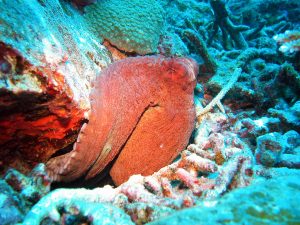

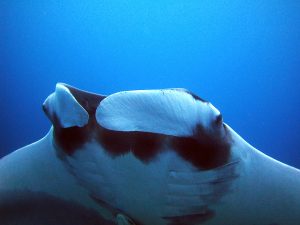
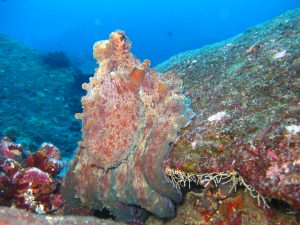


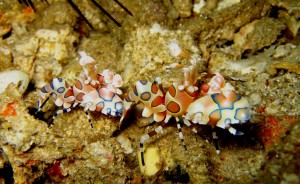







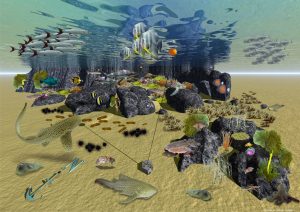

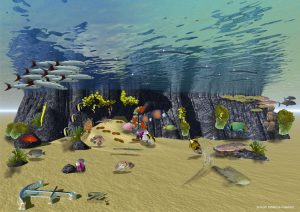







Scubacat Community